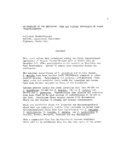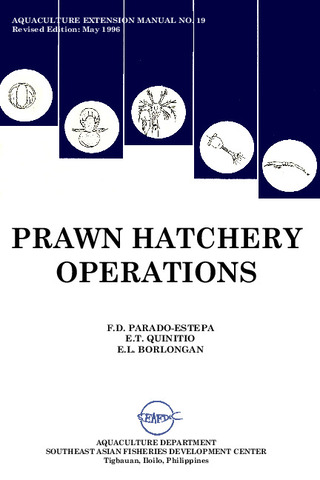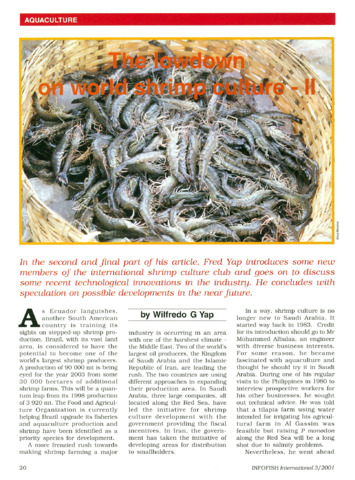| dc.contributor.author | Millamena, O.M. | |
| dc.contributor.author | Pudadera, R.A. | |
| dc.contributor.author | Catucatan, M.R. | |
| dc.contributor.editor | Taki, Yasuhiko | |
| dc.contributor.editor | Primavera, Jurgenne H. | |
| dc.contributor.editor | Llobrera, Jose A. | |
| dc.date.accessioned | 2012-04-20T02:42:38Z | |
| dc.date.available | 2012-04-20T03:41:12Z | |
| dc.date.issued | 1985 | |
| dc.identifier.citation | Millamena, O. M., Pudadera, R. A., & Catacutan, M. R. (1985). Effects of diet on reproductive performance of ablated Penaeus monodon broodstock (Abstract only). In Taki Y., Primavera J.H. and Llobrera J.A. (Eds.). Proceedings of the First International Conference on the Culture of Penaeid Prawns/Shrimps, 4-7 December 1984, Iloilo City, Philippines (pp. 178-179). Iloilo City, Philippines: Aquaculture Department, Southeast Asian Fisheries Development Center. | en |
| dc.identifier.isbn | 9718511008 | |
| dc.identifier.uri | http://hdl.handle.net/10862/913 | |
| dc.description | Abstract only. | en |
| dc.description.abstract | Four practical diets were compared for their effects upon ovarian maturation and spawning of ablated Penaeus monodon broodstock. Diets were formulated based upon the fatty acid profile of wild P. monodon. Diets 1 and 3 were cod liver oil-based while Diets 2 and 4 were soybean oil-based. Experimental treatments consisted of each of the formulated diets given in combination with natural food (squid, mussel, and annelids). An all-natural diet served as control. The fatty acid composition and total lipid content of the diets and of P. monodon fed with these diets were assessed.
Reproductive performance was evaluated in terms of number of spawnings, fecundity, egg and nauplii production and hatching rate of eggs. Broodstock response was best in Diet 1 and comparable with the control, followed by Diets 3 and 4, and was poorest in Diet 2.
Broodstock performance appeared to be related to the fatty acid pattern of the diet. All pelleted diets contained similar levels of total lipids. However, there were differences in amounts of important polyunsaturated fatty acids (PUFA): 20:4ω6 (arachidonic), 20:5ω3 (eicosapentaenoic) and 22:6ω3 (docosahexaenoic) acids. The fatty acid profiles of Diets 1 and 3 more closely resemble the profile of maturing ovaries of wild P. monodon; the PUFA content of these diets and ω3/ω6 ratios were higher compared to Diets 2 and 4. Diet 2, showing the poorest profile among the diets, was low in ω3/ω6 ratio and contained minimal levels of PUFA. | en |
| dc.language.iso | en | en |
| dc.publisher | Aquaculture Department, Southeast Asian Fisheries Development Center | en |
| dc.subject | Brood stoct | en |
| dc.subject | Diets | en |
| dc.subject | Fatty acid | en |
| dc.subject | Shrimp culture | en |
| dc.subject | Penaeus monodon | en |
| dc.title | Effects of diet on reproductive performance of ablated Penaeus monodon broodstock | en |
| dc.type | Conference poster | en |
| dc.citation.spage | 178 | |
| dc.citation.epage | 179 | |
| dc.citation.conferenceTitle | Proceedings of the First International Conference on the Culture of Penaeid Prawns/Shrimps, 4-7 December 1984, Iloilo City, Philippines | en |
| dc.subject.scientificName | Penaeus monodon | |



